Home » Solutions » Injections » Botulinum toxin
Botulinum toxin is the most commonly performed aesthetic treatment in the world. Initially used for medical purposes (neurology, ophthalmology, etc.), botulinum toxin is now highly sought after in aesthetic-oriented medicine and cosmetic surgery. This substance, which comes in powder form, temporarily reduces the contraction of targeted muscles.
Botulinum toxin is used to reduce facial wrinkles and fine lines by relaxing the muscles responsible for these imperfections.
Hyaluronic acid and botulinum toxin are the two ultimate anti-aging treatments — the essentials in aesthetic-oriented medicine to address skin aging.
This product is known for the treatment of frown lines, crow’s feet and the forehead, but there are many indications such as the treatment of primary axillary hyperhidrosis.
Botulinum toxin is an aesthetic treatment widely used by both men and women to reduce the signs of aging.
Although motivations may vary, the desired results are similar : a younger, more relaxed, and natural appearance. In women, botulinum toxin is commonly used to smooth forehead wrinkles, crow’s feet, and glabellar lines. Men,
on the other hand, often seek treatment to soften wrinkles without completely freezing their expressions, while maintaining a masculine appearance. Botulinum toxin allows both men and women to have a relaxed and dynamic face, with subtle yet visible results. The treatment is personalized and tailored to the specific needs of each patient.
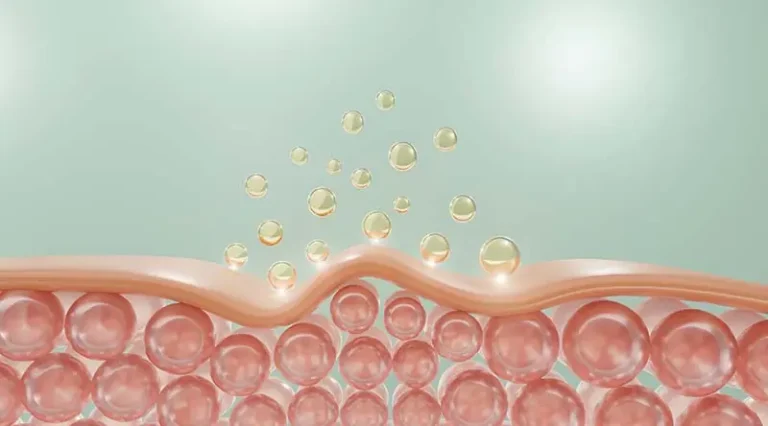
In the face, muscles are closely connected to the skin. Each time a muscle contracts, the skin follows. This causes the appearance of wrinkles that are first dynamic (expression lines), then static (resting wrinkles).
Botulinum toxin works by blocking the release of acetylcholine, the chemical signal required for muscle contraction, at the nerve ending. The muscle can no longer contract, the skin relaxes, and wrinkles fade.
Its action is both aesthetic and functional :
Botulinum toxin injections can produce either a natural or a frozen result, depending on the patient’s preference and the medical technique used.
Some patients prefer a completely frozen effect, in the American style, although the natural result is the most sought after.
From the physician’s side, errors may occur during injection in terms of product dilution, injection point placement, and the quantities used for each point. This lack of technical precision can lead to a frozen appearance, excessive blocking of expressions, or product diffusion with multiple consequences : blocked smile, drooping eyebrows, drooping eyelids…
Hyaluronic acid is a gel used to fill hollows, add volume, or lift. It does not act on the muscles — they continue to contract after the injection. The result is immediate.
Botulinum toxin is a powder reconstituted with saline solution to allow injection. It can only correct wrinkles caused by muscle contraction.
The result begins to appear two days after the injection and becomes fully visible after seven days.
For wrinkles of muscular origin, the first-line treatment is botulinum toxin. If the wrinkle persists, an additional injection of hyaluronic acid can be performed to make it disappear.
Everything depends on the problem to be treated. Excessive sweating, for example, can be treated even at 18 years old.
The laboratory advises not to use botulinum toxin before 18 and after 65 years old.
If we stay in the field of aesthetics, the indication is the appearance of static wrinkles. The age of appearance varies from one person to another and is linked to the individual’s expressiveness.
Indeed, if one intervenes too late, the skin will show creases that can be improved but not erased.
The best indication for botulinum toxin is prevention. One should not wait for wrinkles to set in, but intervene before they appear ( Baby botulinum toxin ).
Botulinum toxin is the most performed treatment in aesthetic-oriented medicine worldwide. In second place come hyaluronic acid injections, and in third, laser hair removal.
In 2012 in the USA, nearly 3.3 million people received it : 2.9 million women and 340,000 men.
In Europe, its annual growth rate was 8.9% over the period 2019–2025.
Botulinum toxin meets various aesthetic needs.
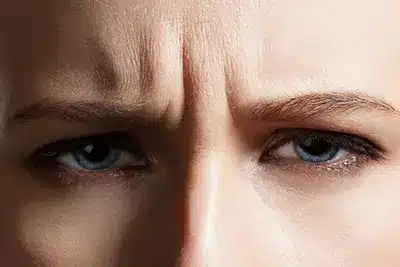
Botulinum toxin frown lines
Treating the vertical lines between the eyebrows refreshes and lightens the gaze.
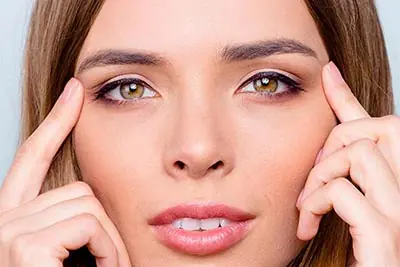
Botulinum toxin crow’s feet
The wrinkles at the outer corners of the eyes are effectively treated, opening up the gaze.
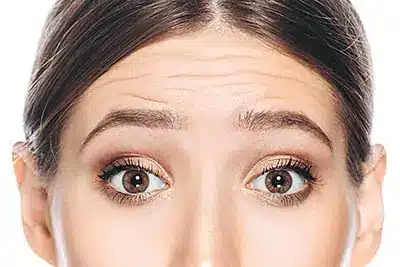
Botulinum toxin forehead wrinkles
The horizontal wrinkles on the forehead must be treated in a natural way to avoid freezing the patient’s expressions.
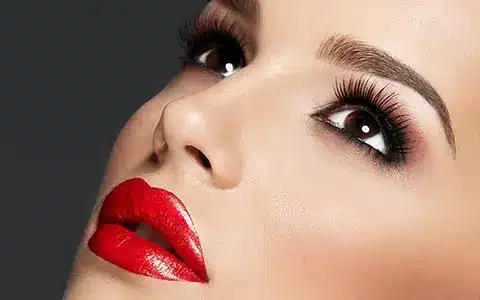
Treating the glabellar lines and crow’s feet lifts the eyebrows and opens the eyes.
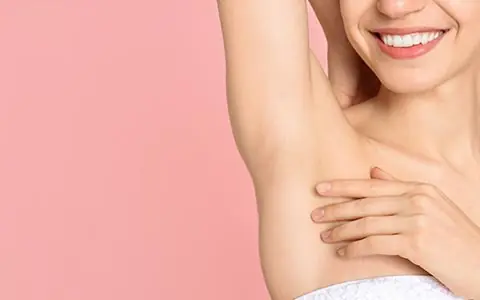
Botulinum toxin excessive sweating
Botulinum toxin is used for the treatment of primary axillary hyperhidrosis; other indications are off-label and are not performed by Dr. Romano.
Several factors may be responsible for this issue, which is why it is important to consult an experienced physician.
The face is analyzed both at rest and in motion. This examination is important to identify muscle balance, detect possible asymmetries, and determine specific technical adjustments according to the patient’s anatomy.
There are different brands of botulinum toxin.
The principle of the treatment is muscle blockage — the injection is made into the muscle, not into the wrinkle. Specific points, adapted to the patient’s anatomy, are injected.
The procedure is quick. A very fine needle is used. No anesthesia is required, as the injection is almost painless. The product does not contain an anesthetic (unlike hyaluronic acid). A mild warming sensation may be felt at the time of administration.
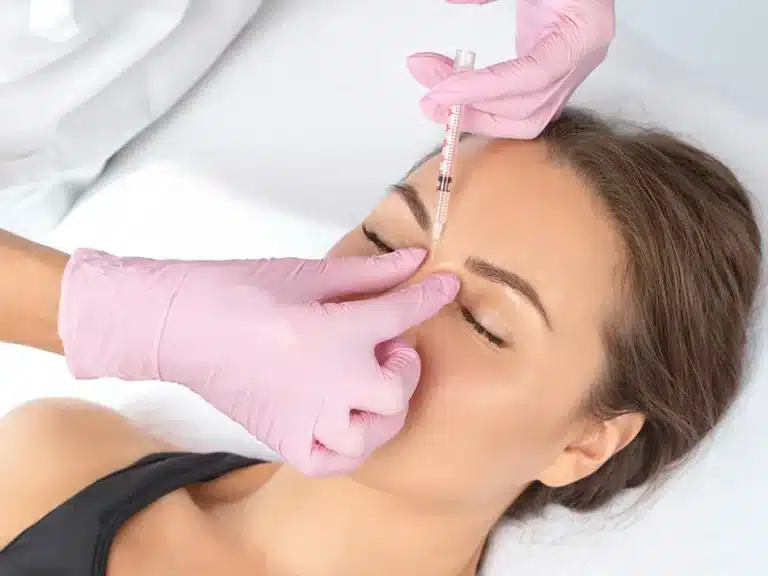
The physician reminds the patient of the importance of following certain guidelines to avoid complications.
On the day of the injection, it is necessary to avoid touching the injected areas, washing the hair, or bending the head.
During the two days following the injection, one should avoid any sports activity, eyelash and eyebrow treatments, and hair dyeing.
For one week, sauna, steam room, tanning booth, facial massages, and facial steam should be avoided.

The contraindications are :
Side effects last between one and seven days.
Typical after-effects include :
ChatGPT a dit :
Botulinum toxin rejuvenates the face : wrinkles disappear, the gaze becomes open and rested.
The result must be adapted to the patient’s wishes. Some patients prefer the complete disappearance of wrinkles over a natural result, others request a natural result, others wish to maintain a slight mobility in all muscles (actors, for example).
Doctor Romano always respects the patient’s choice, however she strongly recommends a natural result.
The effects begin to be visible two days after the injection and are final seven days later.
The result is not permanent. Its duration varies between four and six months.
Botulinum toxin is widely used to reduce wrinkles and improve facial appearance.
Immediate effects (from 0 to 7 days) appear between 1 and 3 days after injection : the first results become visible, the treated muscles begin to relax, and wrinkles gradually fade. After 7 days, the result is optimal : wrinkles are significantly reduced and the skin appears smoother.
In the short term (between 1 and 3 months), the effects reach their peak between 1 and 2 months, especially when a touch-up has been performed one to three weeks after the initial injection to perfect the result. The skin then appears younger and wrinkles are visibly softened. Around 3 months, the effects begin to slowly diminish : the muscles gradually regain activity, but wrinkles have not yet reappeared. In the medium term (between 3 and 6 months), a visible decrease in the effectiveness of botulinum toxin is often observed between 3 and 4 months, with the possible reappearance of certain wrinkles. Between 4 and 6 months, the effects continue to fade : the muscles almost fully regain their normal function and wrinkles return.
In the long term (beyond 6 months), botulinum toxin is completely metabolized by the body. The muscles regain full activity and wrinkles reappear completely. However, after several sessions, some wrinkles may appear less pronounced due to the temporary weakening of the muscles.
Repeating injections every six months allows for a gradual weakening of the muscles, leading to a more lasting reduction of wrinkles. In addition, regular injections help prevent the appearance of new wrinkles.
Botulinum toxin is widely used to reduce wrinkles and improve facial appearance.
Immediate effects (from 0 to 7 days) appear between 1 and 3 days after injection : the first results become visible, the treated muscles begin to relax, and wrinkles gradually fade. After 7 days, the result is optimal : wrinkles are significantly reduced and the skin appears smoother.
In the short term (between 1 and 3 months), the effects reach their peak between 1 and 2 months, especially when a touch-up has been performed one to three weeks after the initial injection to perfect the result. The skin then appears younger and wrinkles are visibly softened. Around 3 months, the effects begin to slowly diminish : the muscles gradually regain activity, but wrinkles have not yet reappeared. In the medium term (between 3 and 6 months), a visible decrease in the effectiveness of botulinum toxin is often observed between 3 and 4 months, with the possible reappearance of certain wrinkles. Between 4 and 6 months, the effects continue to fade : the muscles almost fully regain their normal function and wrinkles return.
In the long term (beyond 6 months), botulinum toxin is completely metabolized by the body. The muscles regain full activity and wrinkles reappear completely. However, after several sessions, some wrinkles may appear less pronounced due to the temporary weakening of the muscles.
Repeating injections every six months allows for a gradual weakening of the muscles, leading to a more lasting reduction of wrinkles. In addition, regular injections help prevent the appearance of new wrinkles.
Tolerance to botulinum toxin : some people may develop a tolerance, requiring higher doses to achieve the same results.
Muscle weakening : this phenomenon is generally positive if the injections have been properly performed. Otherwise, weakening of the frontalis muscle (the forehead muscle), particularly in its lower part, may lead to a permanent drooping of the eyebrows.
Resistance to botulinum toxin : some people may develop antibodies against the toxin, making the treatment less effective or ineffective. This phenomenon, often linked to injections performed too close together, is rare.
The price of botulinum toxin injections in Geneva depends on several factors, including the area to be treated, the amount of product required, the doctor’s expertise, and the patient’s gender, since the necessary doses vary according to muscle strength. In the USA, the price per treatment area is calculated per unit, with an average cost ranging between 10 and 15 CHF per unit, whereas in Switzerland the price is usually calculated per treated area.
It is important to consult an experienced doctor for an accurate and personalized quote, and above all to ensure a natural result without complications. The rate per area or per vial is clearly established in advance, ensuring transparency and precision in patient care.
For aesthetic treatment of the upper face (forehead wrinkles, frown lines, crow’s feet), the prices are as follows :
For therapeutic or functional indications, the prices vary depending on the number of vials used :
Reviews on botulinum toxin are mostly positive, both from patients and doctors.
Patients praise the ability of botulinum toxin to smooth wrinkles and fine lines, giving a younger and more rested appearance. They appreciate the subtlety of the treatment which, when performed by an experienced doctor, allows natural expressions to be maintained while reducing the signs of aging.
Results appear quickly, with an optimal effect after one week. Moreover, botulinum toxin is renowned for its safety and effectiveness, with effects lasting six months. The quick recovery and minimal side effects further enhance patient satisfaction, making botulinum toxin a preferred solution for those who wish to address facial aging signs.
At what age should you start botulinum toxin injections ?
Therapeutic botulinum toxin : innovative medical uses
Notox : a natural alternative to botulinum toxin
Botulinum toxin and sport : optimizing aesthetic results
How does botulinum toxin work ?
Botulinum toxin and mental health : the positive psychological impact
How to prolong the results of botulinum toxin ?
Misconceptions about botulinum toxin
Botulinum toxin : is it safe ?
Preventive botulinum toxin
Botulinum toxin and facial expressions
The latest innovations in botulinum toxin injections
Aftercare following botulinum toxin injections
Botulinum toxin for men : trends and benefits
Botulinum toxin or hyaluronic acid : what are the differences ?
What is the price of a botulinum toxin injection ?
Botulinum toxin injections : before/after, what to expect ?
Botulinum toxin injection : reviews
Is botulinum toxin dangerous ?
Has botulinum toxin been around for a long time ?
Is botulinum toxin good for the face ?
Does botulinum toxin rejuvenate ?
What are the risks of botulinum toxin ?
When can you wash your face after botulinum toxin ?
What cream replaces botulinum toxin ?
What happens when you stop botulinum toxin ?
What is the best natural botulinum toxin ?
Which botulinum toxin lasts the longest ?
Why does botulinum toxin take time to work ?
How to sleep after facial botulinum toxin ?
Is botulinum toxin painful ?
At what age should you start botulinum toxin injections ?
How do botulinum toxins act ?
What are the benefits of botulinum toxin injections ?
How can I remove the effect of botulinum toxin ?
Does botulinum toxin cause fatigue ?
Why doesn’t botulinum toxin last on me ?
Is it normal to have headaches after a botulinum toxin injection ?
Which is better between botulinum toxin and hyaluronic acid ?
How long does a botulinum toxin injection last ?
Does botulinum toxin cause aging ?
Does botulinum toxin give a frozen or natural look ?
Botulinum toxin before 30 : good or bad idea ?
What is the time frame for a botulinum toxin touch-up ?
How does the skin age with botulinum toxin ?
How to make botulinum toxin last longer ?
Resistance to botulinum toxin
Does botulinum toxin change the face ?
Can I go to the hammam after a botulinum toxin injection ?
Can I fly after a botulinum toxin injection ?
How to correct the Mephisto effect after botulinum toxin ?
Can botulinum toxin be combined with other aesthetic treatments ?
Who should not receive botulinum toxin ?
Why not get botulinum toxin ?
Botulinum toxin for expression lines : is it effective ?
Botulinum toxin is a widely used cosmetic treatment approved by health authorities in many countries, including the FDA (Food and Drug Administration) in the United States and the European Medicines Agency (EMA). Botulinum toxin is considered safe when administered by a qualified physician.
Botulinum toxin has been discovered and studied since the early 19th century. Initially identified as a cause of food poisoning, it became an important medical and cosmetic tool in the 20th century. Today, botulinum toxin is widely used to treat a variety of medical and aesthetic conditions.
Botulinum toxin is often used to reduce wrinkles and fine lines on the face, particularly those on the forehead, crow’s feet, and between the eyebrows. It can give a younger and more relaxed appearance when administered properly by an experienced doctor. However, it is essential to consult a physician to determine whether botulinum toxin is suitable for your expectations.
Botulinum toxin smooths wrinkles and fine lines, opens the gaze and thus gives the face a younger and more rested appearance.
Botulinum toxin is indicated for the temporary improvement of the appearance of moderate to severe vertical wrinkles between the eyebrows, visible when frowning to the maximum ( frown lines ) and/or moderate to severe lateral wrinkles ( crow’s feet ) visible during a maximal smile when they cause significant psychological distress in adult patients.
The lifting of the eyebrow is not an indication for botulinum toxin, but the treatment of crow’s feet and frown lines creates an eyebrow-lifting effect.
It is generally recommended to wait at least 24 hours before washing your face after a botulinum toxin injection. This allows the product to settle properly and reduces the risk of the toxin spreading to other muscles.
Yes, botulinum toxin is very effective in reducing or temporarily eliminating forehead wrinkles. Results may vary depending on the depth of the wrinkles and individual response.
Botulinum toxin delays aging by preventing the formation of new wrinkles and the worsening of existing ones.
There is no cream capable of completely replacing botulinum toxin. However, some creams containing peptides, retinol, or hyaluronic acid can help improve the appearance of the skin and reduce the visibility of wrinkles.
In particular, Argireline is a peptide that mimics the action of botulinum toxin.
The laboratory advises against the use of botulinum toxin after the age of 65. When botulinum toxin is discontinued, the temporary effects (wrinkle reduction) gradually fade after 3 to 6 months, and the muscles regain their normal activity. Wrinkles and fine lines will then progressively reappear.
There is no “natural botulinum toxin” identical to the synthetic botulinum toxin. However, some natural products, such as serums made with peptides or plant extracts, can provide anti-aging effects by stimulating collagen production and improving skin elasticity.
Botulinum toxin can temporarily modify the appearance of the face by smoothing wrinkles and fine lines, but it does not change its structure. When injections are performed by an experienced doctor, the face maintains a natural appearance.
A drooping eyelid after a botulinum toxin injection may occur if the toxin accidentally spreads into the levator muscle of the upper eyelid. This complication is rare and temporary, usually resolving within a few weeks.
The lowering of the eyebrows, caused by complete blockage of the forehead, can give a false impression of a drooping eyelid.
Botulinum toxin can be beneficial for patients who wish to reduce the appearance of wrinkles and fine lines and to open up the eyes.
Azzalure, according to studies.
Yes, botulinum toxin can be combined with other aesthetic treatments such as fillers, peelings, and laser treatments. Some of these treatments cannot be performed on the same day.
Botulinum toxin injections are generally well tolerated and the pain is minimal. The application of a numbing cream before the procedure is possible.
The injection of botulinum toxin does not have an immediate effect because the blocking of muscle receptors (the acetylcholine receptors that are the target of botulinum toxin) is only possible once they are free.
That is why botulinum toxin does not act right away : it is necessary to wait for these receptors to become free in order to see a visible effect.
It takes approximately 3 to 4 hours to fall asleep after the injection. It is often said that on the first night after the injection, it is advisable to sleep with your head slightly elevated, but this is not necessary.
Botulinum toxin injections are mainly used to reduce wrinkles and fine lines by relaxing the facial muscles responsible for expressions. They make it possible to achieve a smoother and younger-looking face without surgery. The results are visible within a few days and last for several months.
The choice between botulinum toxin and hyaluronic acid depends on the indications. Botulinum toxin is indicated to smooth expression lines caused by muscle movements, such as forehead wrinkles and crow’s feet. Hyaluronic acid, on the other hand, is a filler used to add volume, fill deep wrinkles, and hydrate the skin. The two treatments can be complementary and are often used together for a complete facial rejuvenation.
Unfortunately, there is no method to cancel the effect of botulinum toxin. The effects of botulinum toxin are temporary and naturally fade over time, usually between four and six months.
Botulinum toxin itself does not generally cause fatigue. However, some people may feel slightly tired after the injection, but these symptoms are temporary.
It is recommended to avoid hammams, saunas, and steam baths for at least two days after a botulinum toxin injection. Excessive heat may increase the risk of botulinum toxin diffusion and bruising.
Yes, this is a frequent side effect, but it is generally mild and temporary.
A botulinum toxin injection session generally lasts between ten and twenty minutes. The injection itself takes barely one minute.
Yes, you can take a plane after a botulinum toxin injection.
Botulinum toxin can be used preventively before the age of 30 to reduce the appearance of expression lines.
The indication of botulinum toxin for a curative purpose is the appearance of the first static wrinkles.
It is important to consult a doctor to determine whether botulinum toxin is appropriate for you.
There is no specific antidote. Once injected, there is no substance capable of neutralizing its action.
Yes, botulinum toxin delays skin aging, it slows the appearance of muscle-related wrinkles.
Botulinum toxin injections should not be performed if they are not necessary and if contraindications exist.
Botulinum toxin slows down skin aging, but it only acts on wrinkles. The other components of skin aging will not be treated.
Botulinum toxin is contraindicated in pregnant or breastfeeding women, in cases of known allergies to botulinum toxin or to any of the ingredients of the product, and in patients with neuromuscular disorders. It is important to consult a doctor to rule out these contraindications.
Botulinum toxin injections delay aging. However, poorly performed injections and a frozen face caused by botulinum toxin can make you look older.
The patient is seen again one to three weeks after the initial injection for a free touch-up to correct any asymmetry or irregularity and perfect the result.
Afterwards, injections should be repeated every four to six months in order to maintain the result.
Botulinum toxin is particularly effective for treating expression lines, such as forehead wrinkles, crow’s feet, and frown lines. By relaxing the muscles responsible for these folds, botulinum toxin smooths the skin and visibly reduces wrinkles. The result is natural and harmonious. It is a quick and lasting solution to soften the signs of aging.